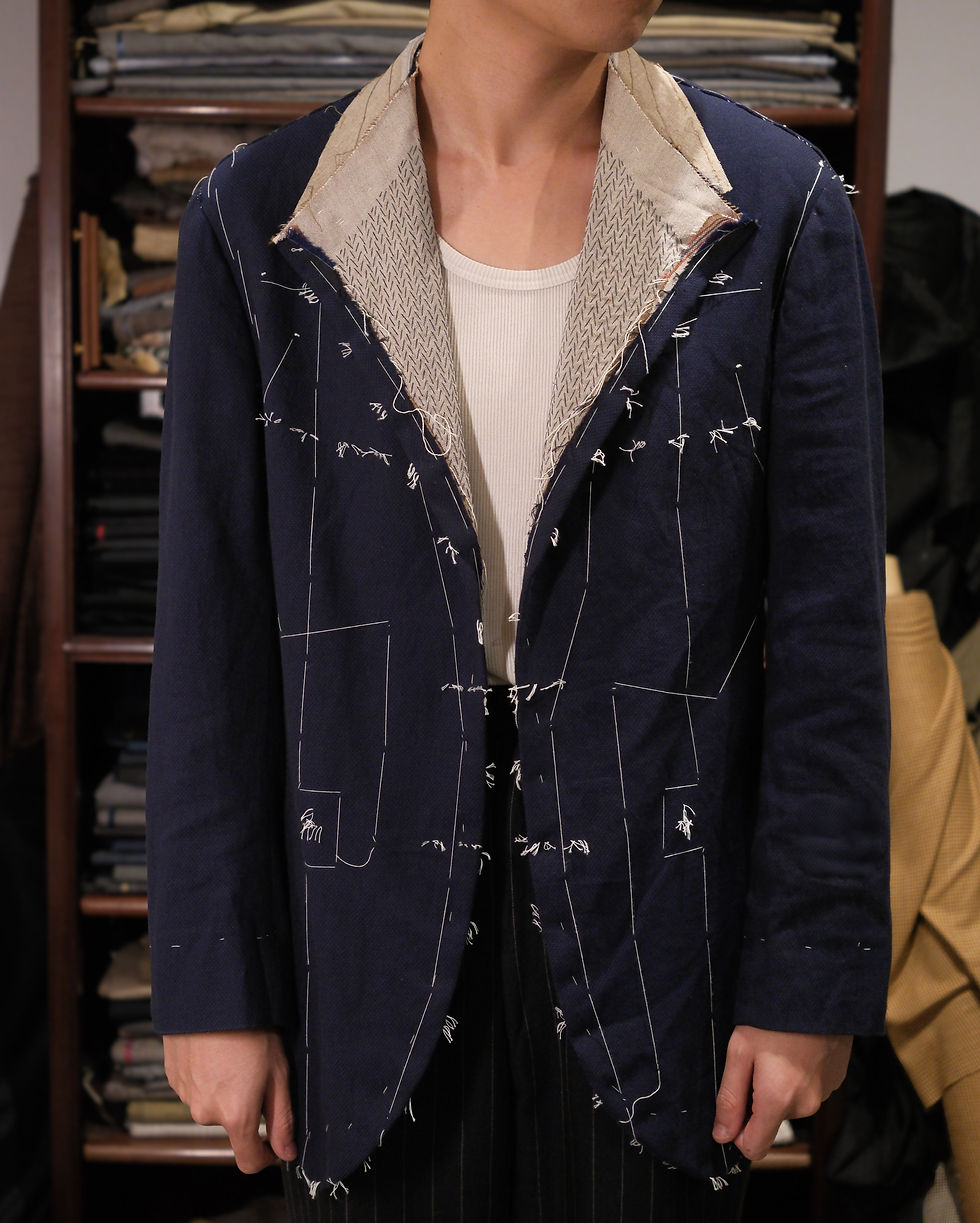What is a full canvas suit?
- Prologue HK
- Dec 6, 2023
- 2 min read
While your suit’s cloth covers the majority of your garment’s outward facing panels, two other components are crucial to the construction of your jacket: the canvas and the lining. Today we will explain what makes the canvas so important, and attempt to explain the differences between the terms ‘full-’ and ‘half-canvas’ that we hear so often.

Canvas is the interlining that is typically found ‘floating’ between the wool outward facing panels of the jacket and the inner lining that you can see on the inside of a suit. It is typically made of loosely woven wool and horse hair, made for the specific purpose of providing structure to the front of the jacket.
Its importance lies in its role as the foundation of essentially all of the jacket’s other components, including all of the chest, lapels, pockets, and even part of the shoulders. Furthermore, it also has to conform to the shape and physique of its wearer to provide shapely drape and comfort.
Pad-stitching sewn by hand is used to facilitate this added structure and drape, and are applied meticulously and repeatedly over the entire chest, collar, and lapel of the canvas.

This process is highly time consuming and labour-intensive, and hence extremely expensive. Only the best tailors can afford to have hand padded lapels, and hand padded canvas for superior drape. The exact opposite of a full-canvas suit is the mass-produced fused suit, which forgoes all the difficult handwork in producing a canvas that is able to float and flow as the garment moves. Instead of taking the time to stitch the canvas to the body panels, fused suits use a synthetic canvas that is covered with adhesive and adhered to the inside of the panel. While this contributes to faster and cheaper production, the end result is a garment that often feels lifeless due to its rigidity and lack of movement. Moreover, fused suits are less durable as the adhesive will stop sticking over time, resulting in delamination causing bubbles to appear under the surface. Dry cleaning further exacerbates this issue with heat and steam.

Last but not least is the half-canvassed suit, which has elements of both full-canvas and fused suits. It consists of a type of interlining covered in adhesive only on the bottom portions of the jacket, leaving the chest piece to float and move like in full-canvas, while the bottom is fused. This provides a medium ground in which there is some drape and flow, and the garment’s cost is reduced with less labour intensive production methods.
At Prologue all of our suits are still full-canvass because we feel that it performs far better insofar as drape, structure, and comfort. At the very minimum we recommend half-canvassed suits as fused suits lack longevity and are likely to be a poor investment.



If you're a true sports fan, Pro Standard Clothing is a must-have! 🔥 From Pro Standard Jackets to Pro Standard Hats, their collection brings premium style and team pride together. Whether you're rocking a Pro Standard NFL Hoodie, a Pro Standard Sweatshirt, or a classic Pro Standard Shirt, you’ll always stand out. Team Pro Standard never misses when it comes to high-quality Pro Standard Apparel! 🙌🏽 #ProStandard #StreetwearEssentials
شيخ روحاني
رقم شيخ روحاني
الشيخ الروحاني
الشيخ الروحاني
شيخ روحاني سعودي
رقم شيخ روحاني
شيخ روحاني مضمون
Berlinintim
Berlin Intim
جلب الحبيب
The Kayce Dutton Jacket is the perfect blend of rugged durability and effortless Western style. If you're aiming to capture that authentic Yellowstone vibe, western outfitters have some great options to help you pull off the look with ease.